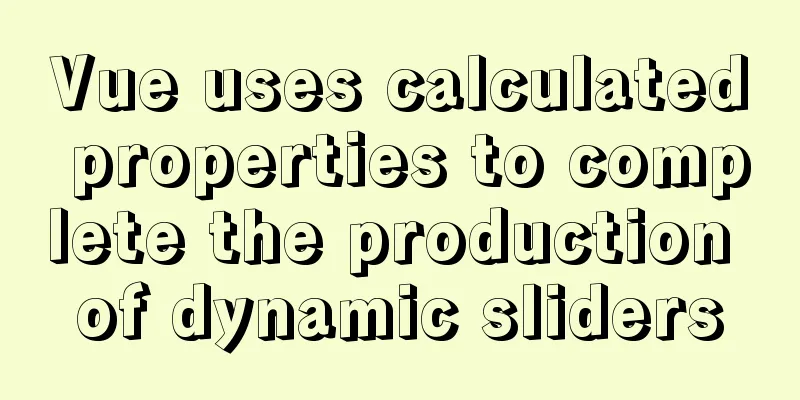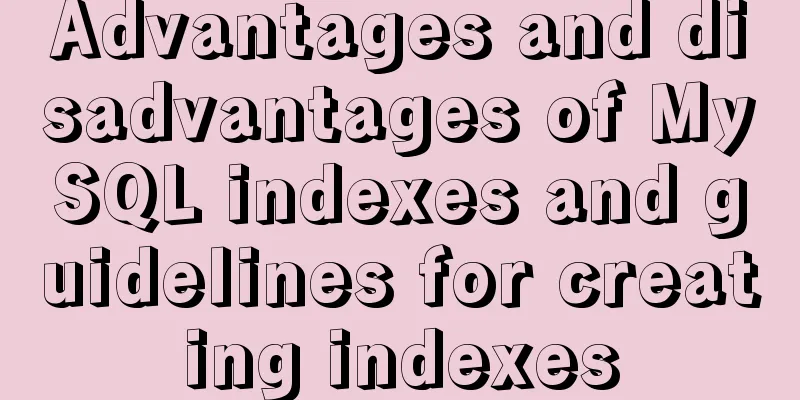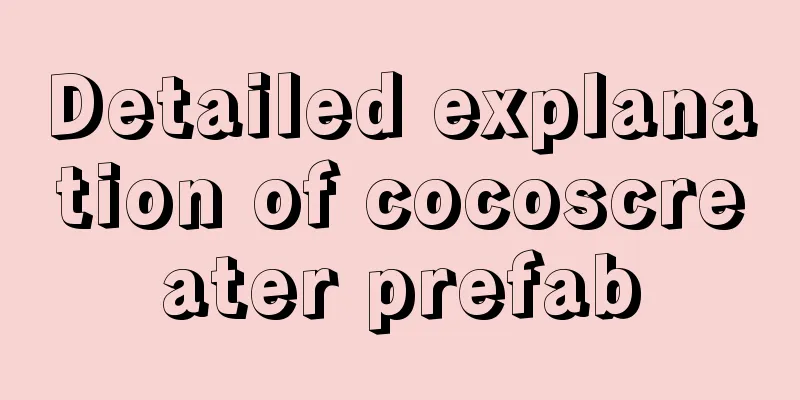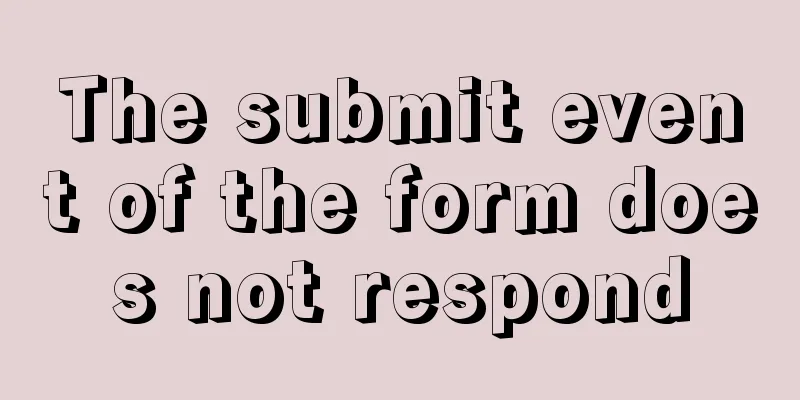Vue uses calculated properties to complete the production of dynamic sliders

|
Layout part:
<div id="slider">
<!-- Main animation effects: font, progress bar and expression change with the percentage of emotion level-->
<label for="range" :style="{'color':getHappinessColor}">Emotional level: {{val}}%</label>
<!-- The color of the slider should be bound to the pre-set color, and the color can be changed at will-->
<!-- The value of the emotion level should also change with the val value-->
<input type="range" name="" id="range" min="0" max="100" v-model="val">
<!-- The value of the slider should be bound to val, which is written to the calculated property in order to synchronize with the range of the slider fill color below-->
<div class="slider outer">
<!-- Let's make the width of label equal to the width of our data center val, so that the label will move with the movement of the slider, achieving the effect of changing the expression-->
<label for="" class="slider inner" :style="{'width':val+'%',
'border-radius':greaterThanFifty">
<span :style="{'right':getPlacement}">{{getHappiness}}</span>
</label>
</div>
</div>
Style part:
*{
padding: 0;
margin: 0;
list-style: none;
}
:root {
/* Global CSS variables */
--yellow: #ffd100;
--orange: #ff6a13;
--darkGray: #53565a;
--midGray: #888b8d;
--white: #fff;
}
*,*::after,*::before{
color: var(--darkGray);
box-sizing: border-box;
}
html,body {
width: 100%;
height: 100%;
}
body{
min-height: 100vh;
display: flex;
justify-content: center;
align-items: center;
background-color: var(--white);
}
#slider{
/* Local CSS variables */
--roundness: 20px;
width: 100%;
max-width: 600px;
outline: 1px dashed red;
padding: 4vh;
/* Grid layout */
display: grid;
justify-content: stretch;
}
#slider>label{
width: 100%;
font-size: 1.5em;
padding: 0 0 0.5em;
margin: auto;
}
#slider input{
grid-row: 2 / 3;
grid-column: 1 / 2;
width: 100%;
position: relative;
z-index: 1;
opacity: 0;
height: calc(var(--roundness) * 2);
cursor: pointer;
}
#slider .outer{
width: 100%;
height: var(--roundness);
background-color: var(--midGray);
border-radius: var(--roundness);
display: flex;
align-items: center;
align-content: center;
position: relative;
z-index: 0;
margin: auto;
grid-row: 2/3;
grid-column: 1/2;
}
#slider input:focus + .outer {
outline: 1px dashed var(--orange);
}
#slider label.inner {
position: absolute;
width: 100%;
height: 100%;
background: var(--white);
background: linear-gradient(to left, var(--yellow), var(--orange));
border-top-left-radius: var(--roundness) !important;
border-bottom-left-radius: var(--roundness) !important;
position: absolute;
transition: all 0.3s cubic-bezier(0.5, 0.4, 0.2, 1);
text-align: right;
font-size: calc(var(--roundness) * 2);
line-height: 1;
}
#slider label.inner span {
position: absolute;
right: -2px;
top: calc(50% - var(--roundness) * 2);
top: calc(var(--roundness) * -.3);
transition: inherit;
}
Vue part:
<script src="./js/vue.js"></script>
<script>
let a = new Vue({
el:"#slider",
data() {
return {
val: 70,
//Key points, also used to dynamically associate 1: emotion percentage, 2: displayed text expression}
},
mounted() {
this.val = Math.floor(Math.random() * 101)
},
computed: {
getPlacement: function () {
return `${(-0.009 * ((this.val * -1) + 104))}em`;
// Get the position. Because it is a calculated property, it is equivalent to binding to val. After binding to the bottom span, it is equal to the width bound to val above.
},
greaterThanFifty: function () {
return this.val > 50 ? `var(--roundness)` : `0`;
// When the val value is greater than 50, the border changes. It can be omitted or not bound. It is not critical.},
getHappinessColor: function () {
return `rgba(255, ${106 + (103 / 100 * this.val)}, ${(Math.floor(this.val * -1 / 7.692)) + 13}`;
// Function to get color, you can change the value at will, but the color transition above is more natural},
getHappiness: function () {
let mood;
// "Physically bind" the val value to all expressions
if (this.val == 0) {
mood = "🤬"
} else if (this.val < 10) {
mood = "😡"
} else if (this.val < 20) {
mood = "😠"
} else if (this.val < 30) {
mood = "😦"
} else if (this.val < 40) {
mood = "☹️"
} else if (this.val < 50) {
mood = "🙁"
} else if (this.val < 60) {
mood = "😐"
} else if (this.val < 70) {
mood = "🙂"
} else if (this.val < 80) {
mood = "😊"
} else if (this.val < 90) {
mood = "😄"
} else if (this.val < 100) {
mood = "😃"
} else if (this.val == 100) {
mood = "😍"
}
return mood;
}
}
})
</script>
Final style:
This is the end of this article about how to use calculated properties in Vue to create dynamic sliders. For more information about how to use calculated properties in Vue to create dynamic sliders, please search for previous articles on 123WORDPRESS.COM or continue to browse the following related articles. I hope you will support 123WORDPRESS.COM in the future! You may also be interested in:
|
<<: Introduction to the application of HTML tags superscript sup and subscript sub
>>: Solution to VMware virtual machine no network
Recommend
Detailed explanation of MySQL master-slave replication and read-write separation
Table of contents Preface 1. Overview 2. Read-wri...
Detailed tutorial on installing mysql 8.0.20 on CentOS7.8
1. Install MySQL software Download and install My...
Vue3 gets the current routing address
Correct answer Using useRouter : // router path: ...
Detailed explanation of the method of comparing dates in MySQL
If there is a table product with a field add_time...
How to implement responsiveness in Vue source code learning
Table of contents Preface 1. Key Elements of a Re...
How to install Docker and configure Alibaba Cloud Image Accelerator
Docker Installation There is no need to talk abou...
Deep understanding of the use of ::before/:before and ::after/:after
Part 1: Basics 1. Unlike pseudo-classes such as :...
Detailed explanation of MySQL instance with SSD storage enabled
Detailed explanation of MySQL instance with SSD s...
Embedded transplant docker error problem (summary)
After a long period of transplantation and inform...
How to solve the error of connecting to the database when ServerManager starts
Servermanager startup connection database error R...
How to encapsulate axios request with vue
In fact, it is very simple to encapsulate axios i...
Mysql varchar type sum example operation
Some friends, when learning about databases, acci...
Detailed process of modifying hostname after Docker creates a container
There is a medicine for regret in the world, as l...
Calling the search engine in the page takes Baidu as an example
Today, it suddenly occurred to me that it would be...
Example of cross-database query in MySQL
Preface In MySQL, cross-database queries are main...










